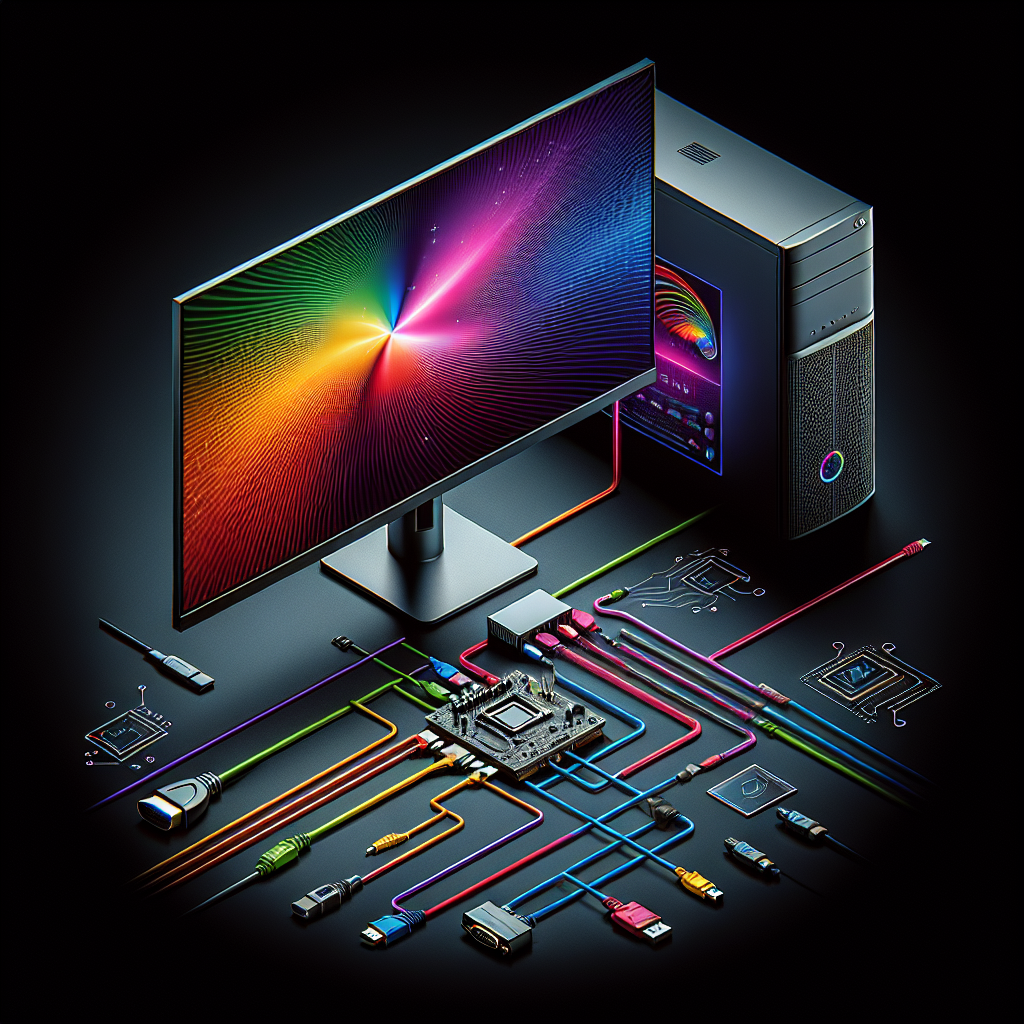Introduction
As technology advances, OLED monitors offer unparalleled display quality, with deep blacks and vibrant colors that surpass traditional LCD panels. Connecting an OLED monitor to your computer can elevate your user experience, whether for gaming, design, or general use. This guide will walk you through the steps needed to connect an OLED monitor to your computer, addressing different interfaces, compatibility considerations, and troubleshooting tips.
Step-by-Step Guide to Connecting an OLED Monitor
1. Check Your Monitor and Computer Ports
Before you begin, it’s crucial to identify the types of ports available on both your OLED monitor and computer. Common ports include HDMI, DisplayPort, USB-C, DVI, and VGA. Here’s a quick look at the specifications:
| Port Type | Max Resolution Supported | Common Usage |
|---|---|---|
| HDMI | 4K at 60Hz | General use, gaming, streaming |
| DisplayPort | 8K at 60Hz | Gaming, multiple monitor setups |
| USB-C | 4K and beyond | Modern laptops and high-end monitors |
| DVI | 1080p | Older monitors and computers |
| VGA | 1080p | Legacy systems |
2. Select the Appropriate Cable
Once you have identified the compatible ports on your devices, select the appropriate cable to connect your OLED monitor to your computer:
- HDMI Cable: Ideal for modern monitors and comprehensive quality, supporting video and audio.
- DisplayPort Cable: Offers higher bandwidth, suitable for gaming setups with high refresh rates and multiple monitors.
- USB-C Cable: Optimal for new-generation devices, often used in connection with docking stations and supporting power delivery.
If your computer and monitor have different port types, consider using adapters like HDMI-to-DisplayPort or USB-C-to-HDMI.
3. Connect the Cable
Plug one end of the cable into the appropriate port on your monitor and the other end into your computer. Ensure that the connections are secure to avoid any signal issues.
4. Configure Display Settings
After physically connecting the monitor, you need to adjust the display settings on your computer:
- Windows: Go to Settings > System > Display. Under the Multiple displays section, click Detect and adjust the display resolution and orientation accordingly.
- Mac: Go to System Preferences > Displays. Click on the Arrangement tab to configure the positioning and resolution.
Ensure the resolution and refresh rate match the specifications of your OLED monitor for optimal performance.
Troubleshooting Connection Issues
No Signal or Display Not Detected
If your monitor shows a ‘No Signal’ message or isn’t detected by your computer, try the following steps:
- Double-check cable connections.
- Ensure that the monitor is powered on and set to the correct input source.
- Try using a different cable or adapter.
- Update your computer’s graphics drivers.
Incorrect Resolution or Display Artifacts
If you experience resolution issues or display artifacts, you might need to adjust your settings or update software:
- Verify that the display resolution is set to the native resolution of the OLED monitor.
- Update your computer’s operating system and graphics drivers.
- Check if there are firmware updates available for your OLED monitor.
- Disable any scaling settings that might distort the display output.
Advanced Considerations
High Refresh Rates and G-Sync/FreeSync
If you’re using your OLED monitor for gaming, you might benefit from features like high refresh rates or adaptive sync technologies such as G-Sync (for NVIDIA graphics cards) or FreeSync (for AMD graphics cards). These technologies reduce screen tearing and provide a smoother experience.
- Ensure your monitor and graphics card support G-Sync or FreeSync.
- Enable the feature in your monitor’s settings menu.
- Update your graphics card drivers to the latest version.
Multi-Monitor Setup
For productivity or gaming, you may want to set up multiple monitors. Here’s how you can do it effectively:
- Ensure your computer’s graphics card supports multiple displays.
- Use a combination of DisplayPort and HDMI cables for maximum compatibility.
- Configure the multi-monitor setup in your operating system’s display settings.
- Arrange the monitors physically and in the display settings menu according to your preference.
Conclusion
Connecting an OLED monitor to your computer can significantly enhance your visual experience. By following these steps, you can ensure a seamless connection and optimal performance. Remember to check port compatibility, choose the right cable, configure display settings accurately, and troubleshoot any issues that arise. With these tips, you’re well on your way to enjoying the superior picture quality that OLED technology provides.

